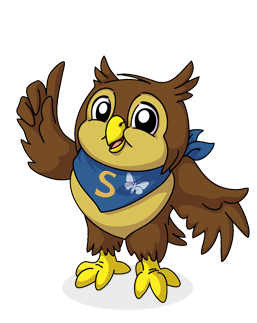Writing task
Today we would like you to have a go at writing a set of instructions. You could write a set of instructions explaining how you made your castle from last week’s topic task or you could watch the video below, explaining how to make a paper dot bird, and write a set of instructions for this. Remember to use the instruction toolkit to help. (See below.)
https://www.bbc.co.uk/cbeebies/makes/mister-maker-paper-dot-bird
Instruction toolkit:
Use time connective words – First, next, after that, then, finally.
Use bossy verbs – e.g. cut, put, add, glue, draw
Try to use some adverbs – e.g. carefully, gently, quickly
Start with a ‘You will need’ list.
Start each instruction on a new line.
Arithmetic task
Today, we’d like you to continue to practise your 5 times table by rolling a die and multiplying the number by 5. See how quickly you can say the answer.
Maths task
Today we will begin to learn about 3D shapes – Chapter 12 – Three-Dimensional Shapes. (Page 82 of the Textbook.) See if you can find everyday objects that are like the shapes in the ‘In Focus’ task on page 82 of the Textbook. Today’s learning is all about naming 3D shapes by identifying and describing their properties e.g. how many faces they have, whether the faces are curved or flat, how many vertices they have and what 2D shape each of the faces are.
Read the information on pages 82-83 of the Textbook and then have a go at the game on page 84 using the everyday objects you found earlier.
Finally, have a go at the Guided Practice activity on page 85. Please remember not to draw in the Textbook. Thank you. We’ll have a go at the Workbook activity tomorrow.
Topic based task
As part of our Towers, tunnels and turrets project we would like you to complete a Bridge Investigation. We like you to find out about the different shapes of bridges and which ones are stronger. You could follow the steps below or complete your own investigation using a range of building materials e.g. lego, junk modelling, paper. Have fun building and testing your bridges.
Our suggestion: Firstly, fold a piece of thick cardboard into thirds, form two ‘legs’ and a flat top and anchor the legs with blobs of sticky tack or tape. Add a penny at a time to the flat top and find out how many pennies the bridge can hold before it bends or collapses. Then bend an identical piece of cardboard into an arch shape, again anchoring the ends, and check how many pennies it can now hold. Talk about which shape was strongest and why you think this.
Note: Arches are generally much stronger than flat bridges and should hold more pennies. You could model the strength of arches and domes by placing a pile of books on four half eggshells (one under each corner.)
Additional Reading Material
Some parents have asked if they can have new reading books for their children. I’m sure you understand that unfortunately, at this time, it is not safe for us to do this as we need to minimise the number of people coming to school.
So for now, as well as encouraging the children to read other material you have, using Lexia (for those with accounts) and accessing ebooks from the oxford owl website, we will upload other reading material here for you as often as we can.
The material consists of activity cards. Each activity card contains a short extract of age appropriate text for your child to read and some questions you could ask to check their understanding. Please do not use these as written comprehension tasks, we will set two of these a week in addition, use them as additional reading material if you wish to.
Paul the Lucky Octopus Activity Card
Please don’t hesitate to get in touch if you have any questions or want to share the children’s achievements. I will be in school teaching tomorrow so will respond as soon as I am able to.
Happy learning!
Mrs Murray and Mrs Clark



